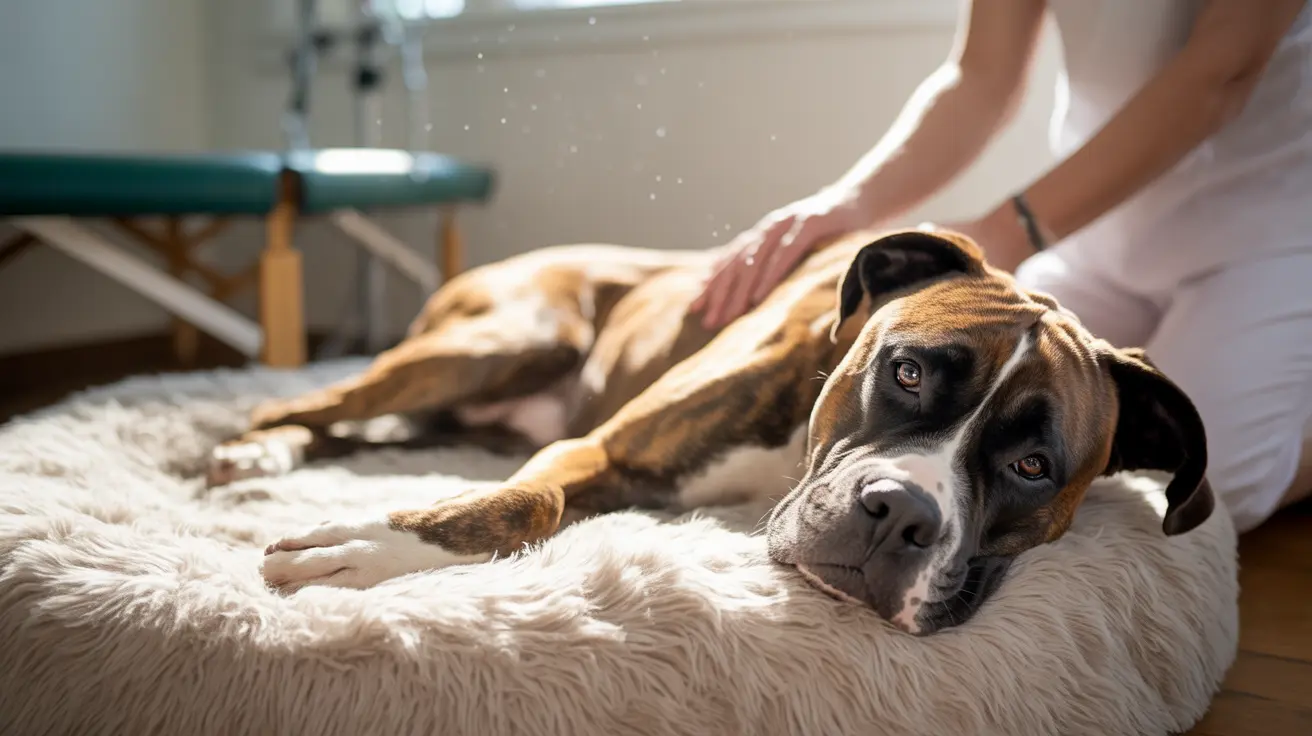Before You Begin: Essential Preparation Steps
Before attempting any massage therapy on your dog with a torn ACL, there are several crucial preparations you need to make:
- Consult your veterinarian for approval and timing
- Create a quiet, comfortable environment
- Gather any recommended massage oils or supplies
- Ensure your dog has taken prescribed pain medications
- Have treats ready for positive reinforcement
Setting Up the Perfect Environment
Choose a quiet room with a comfortable temperature where your dog can fully relax. Use their favorite bed or blanket as a foundation, ensuring they feel secure and supported throughout the session.
Safe Massage Techniques for ACL Recovery
Initial Relaxation Phase
Start with gentle, full-body strokes to help your dog relax:
- Begin with long, smooth strokes along the back
- Use very light pressure initially
- Watch for signs of comfort or distress
- Gradually work toward the affected leg
Targeted Muscle Work
Focus on the muscles surrounding the injured knee, but never directly on the joint:
- Gentle circular motions on the thigh muscles
- Light kneading of the hip area
- Careful strokes along the hamstring region
- Avoid direct pressure on the knee joint
Professional Tips for Maximum Benefit
To ensure the most effective massage therapy:
- Keep sessions short (3-5 minutes)
- Maintain consistent pressure
- Monitor your dog's reaction throughout
- Stop immediately if you notice signs of discomfort
Common Mistakes to Avoid
Be aware of these potential pitfalls:
- Applying too much pressure
- Massaging directly over the injury
- Continuing despite signs of discomfort
- Skipping veterinary consultation
Integrating Massage with Overall Recovery
Massage therapy should be part of a comprehensive recovery plan that includes:
- Prescribed medications and treatments
- Controlled exercise as recommended
- Physical therapy exercises
- Proper rest and restricted activity
Frequently Asked Questions
How do I safely massage my dog's leg after a torn ACL injury?
Start with very gentle strokes away from the knee joint, focusing on surrounding muscles. Always use light pressure and watch your dog's reaction. Stop if they show any signs of discomfort.
What massage techniques help reduce pain and swelling in dogs with torn ACLs?
Gentle effleurage (stroking) and light circular motions around the thigh and hip muscles can help reduce pain and swelling. Avoid direct pressure on the knee joint and always stroke in the direction of the heart.
When is the best time to start massaging my dog's muscles after ACL surgery or injury?
Wait for your veterinarian's approval before beginning massage therapy. Usually, this is after initial swelling has subsided and any surgical wounds have healed, typically 1-2 weeks post-surgery or injury.
Can massage therapy improve my dog's mobility and muscle strength after an ACL tear?
Yes, when done correctly, massage can help maintain muscle tone, improve circulation, and support mobility. However, it should be part of a comprehensive rehabilitation plan prescribed by your veterinarian.
What precautions should I take to avoid causing more pain or injury while massaging a dog with a torn ACL?
Never massage directly over the injured knee, always use gentle pressure, watch for signs of discomfort, and stop immediately if your dog shows pain or resistance. Always follow your veterinarian's guidelines.
Conclusion
Mastering how to massage a dog with a torn ACL can significantly contribute to their recovery process. Remember to always prioritize gentle techniques, maintain close communication with your veterinarian, and pay attention to your dog's responses during massage sessions. With patience and proper technique, massage therapy can be a valuable tool in your dog's journey back to mobility and comfort.






